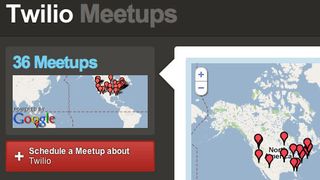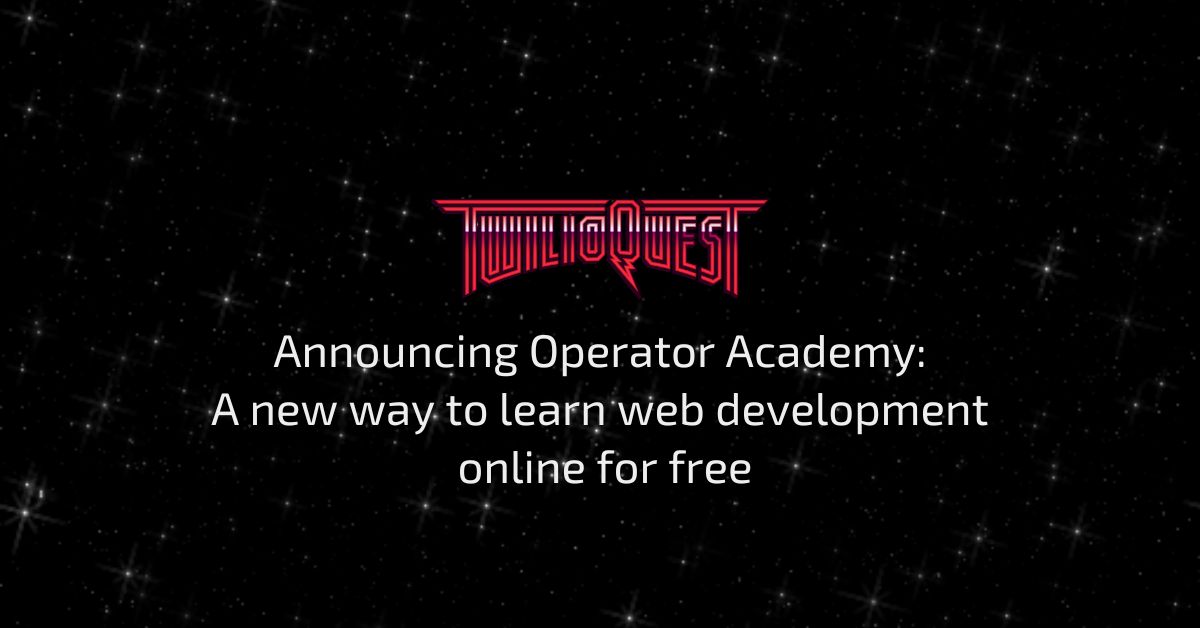Twilio Meetup NYC Recap – Twitio.tw
Time to read: 4 minutes

Tuesday night, the great folks over at Hashable opened their offices to host the third Twilio Meetup in NYC. If you haven’t heard of them, they’re worth checking out.

Twilio NYC
Our first two meetups in NYC happened in a bar in the West Village, this was our first event with a presentation. We maintained the tradition of a casual environment, and there was plenty of food and drink to go around. We’re going to continue to host Twilio Meetups in NYC on a monthly basis, RSVP to be notified of the next event.
I highlighted recent Twilio news including the new api revision, new lower pricing, and Dave McClure’s Twilio Fund. After food and a brief round of intros Ben Nadel presented his project, Twitio.
Twitio – Putting Some Talk in Your Tweets
Ben Nadel has been to all of the NYC Twilio Meetups so far and has built some pretty cool apps. He built Twitio.tw in less than two days as a proof of concept. You login to the service with your Twitter account and attach a phone number. Once you’ve linked your account, you can call and record a message to tweet out to your followers. The site has a slick design and works very well. Ben demoed the app for us and talked about how he built it.

Here’s what Ben had to say about Twitio:
Q: How did you get started building Twitio?
Twitio was started as a personal learning project for oAuth – the open authentication protocol used by Twitter. Up until now, I had only used Basic Authentication when invoking Twitter’s API. And, now that Basic Authentication is no longer supported, I figured it was time to dig in and tackle the oAuth beast. To make the project more exciting, however, I also wanted to bring Twilio into the picture because it’s a technology that affords a tremendous amount of functionality with such a minimal amount of effort.

Typically, when I start a learning project of this nature, I begin with the design; I’m a firm believer that a project needs to have a good user interface in order to be an effective learning tool. However, because I knew oAuth was going to be such a bear to wrap my head around, I started out by experimenting with the oAuth “dance” (as it is often referred to euphemistically). Overall, the project took about 20 hours to put together and I’d say that about 12 or those hours were dedicated just to getting oAuth to work properly.
Q: What technologies are you using to build/support it?
At its core, Twitio is an Adobe ColdFusion application. All of the database tables are kept in-memory as ColdFusion Query objects and serialized to disk as context-aware encrypted WDDX files. In an ordinary application, I would simply use a database like MySQL; however, in a learning application, especially one where I plan to distribute the code, I like to keep things as portable as possible. While it adds a layer of persistence complexity, people can now take this code, drop it anywhere they want, and start experimenting without practically no configuration. Nothing supports in-memory SQL functionality like ColdFusion – it’s quite stunning.
Ultimately, however, this ColdFusion application is just acting as a proxy between Twilio and Twitter.
Q: How did you get started developing with Twilio?
I had never heard of Twilio until Aaron Foss gave a presentation on it at the New York ColdFusion User Group (NYCFUG). I had previously played with other SMS integration tools; but, when I watched Aaron demonstrate Twilio, I swear I couldn’t keep the silly grin off my face. Watching him incrementally build a voicemail system with just a few XML tags was ming-boggling to say the least.
Q: How was the experience of integrating Twilio with your chosen tools and technologies?
Integrating Twilio with ColdFusion was about as easy as it gets. Although, I can’t imagine that this is in anyway unique to ColdFusion. The Twilio API is just so simple that it rarely takes more than a few lines of code to generate a good amount of mobile-integration functionality. In a project that took about 20 hours or effort, I’d estimate that the Twilio aspect of it took no more than 2 or 3 hours. Between the Twilio debugger and my own input/output logging, there’s really no mystery as to how the Twilio client is interacting with your code. This makes finding and removing bugs a stress-free effort.
My company, Epicenter Consulting, has already started integrating Twilio into our client projects with great success. It’s definitely a technology that we plan to leverage heavily going forward.
Check out Ben’s blog post about Twitio.tw on his personal site.

Twilio Meetups are Everywhere
Interested in organizing a Twilio Meetup in your city? It’s easy! Just head over to http://meetup.com/twilio and add an event. Set a date, time, and venue then announce it in your tech community. We’re here to help if you need us, just shoot an email to help@twilio.com. We can help you find a venue and promote your event. Heck, if you ask in advance we may even be able to send you a care package with swag and supplies.
Upcoming Twilio Meetups
Related Posts
Related Resources
Twilio Docs
From APIs to SDKs to sample apps
API reference documentation, SDKs, helper libraries, quickstarts, and tutorials for your language and platform.
Resource Center
The latest ebooks, industry reports, and webinars
Learn from customer engagement experts to improve your own communication.
Ahoy
Twilio's developer community hub
Best practices, code samples, and inspiration to build communications and digital engagement experiences.


